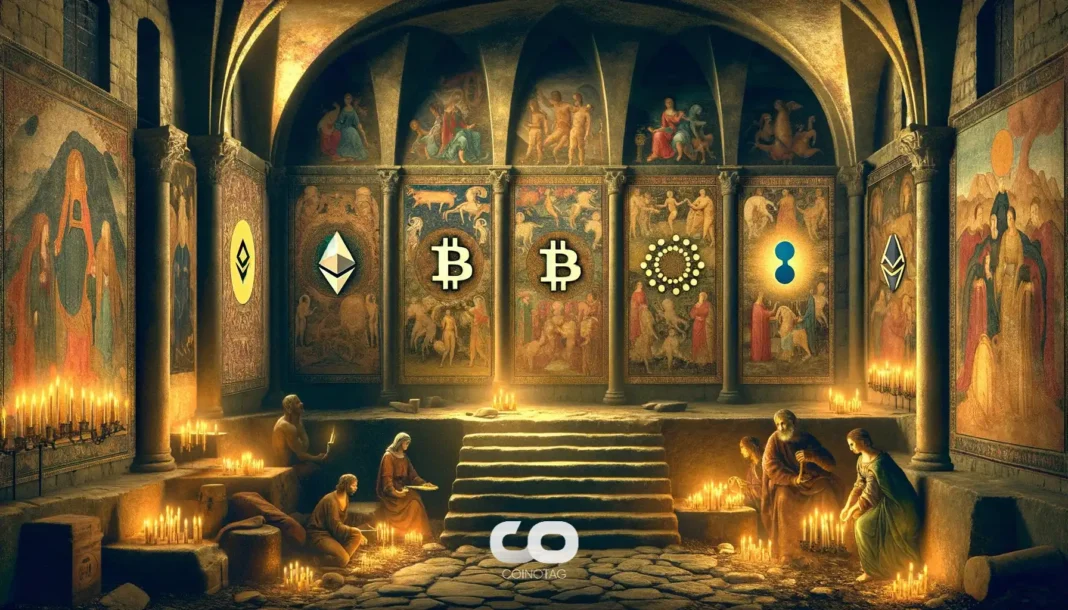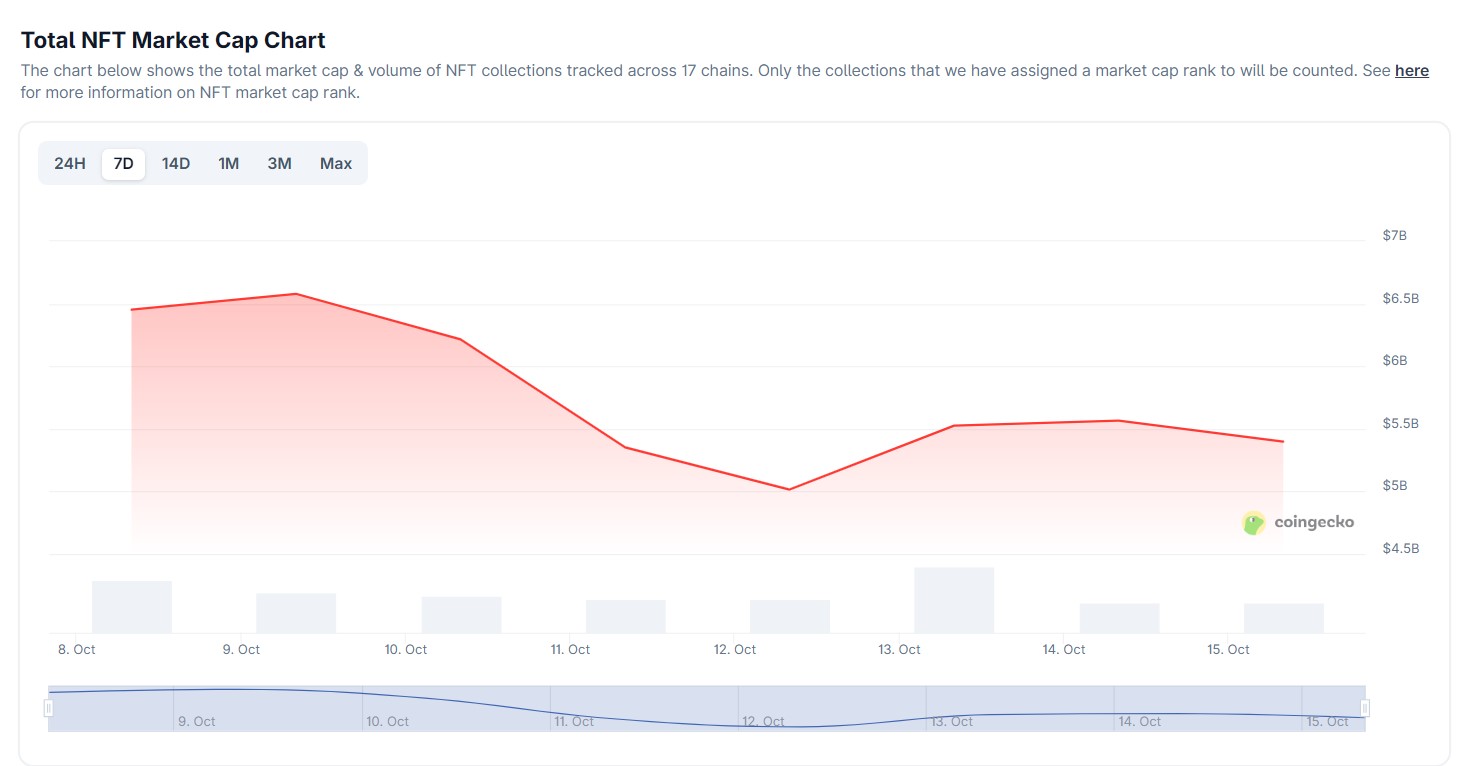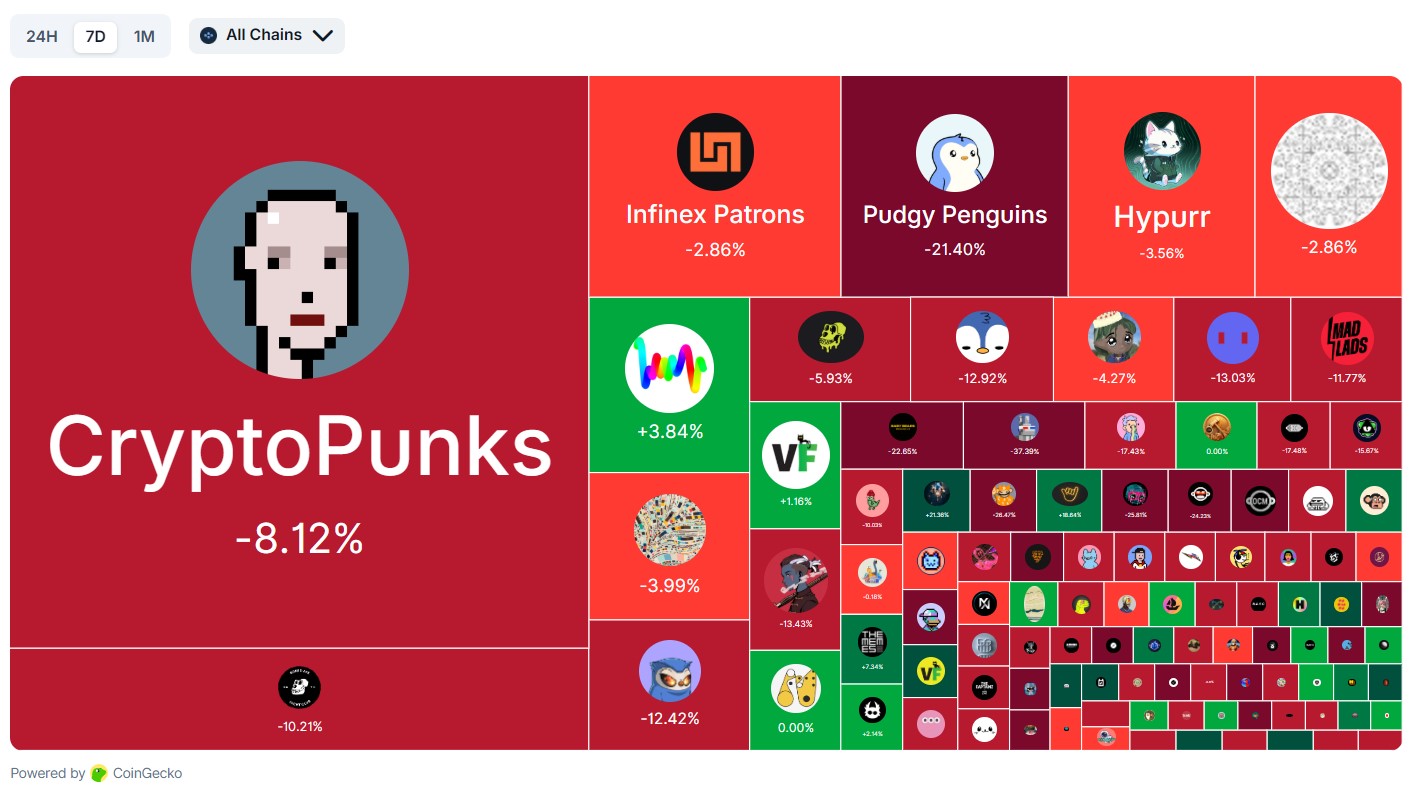Top Ethereum NFT Collections May Remain Down Despite Partial Market Recovery

The NFT market recovery after Friday’s crash pushed total sector valuation from $5.0B to roughly $5.5B, yet major Ethereum collections remain down on weekly and monthly charts. CoinGecko and CoinShares data show selective 24-hour gains but persistent volatility and reduced liquidity for floor prices.
How does the NFT market recovery unfold after a crypto crash?
NFT market recovery following the flash sell-off showed an initial rebound in aggregate valuation but uneven performance across collections. CoinGecko data indicate the sector fell from $6.2 billion to $5.0 billion, then recovered to about $5.5 billion, signaling buyer interest but continued sensitivity to broader crypto volatility.
How did top NFT collections perform after the crash?
The correction hit large-cap Ethereum projects hardest. According to CoinGecko, Bored Ape Yacht Club (BAYC) declined ~10.2% over seven days while Pudgy Penguins was down ~21.4% for the week. CryptoPunks, the largest collection by market capitalization, showed an 8% weekly loss and near-5% decline over 30 days. Some assets posted short-term resilience: Hyperliquid’s Hypurr rose 2.8% in 24 hours and Mutant Ape Yacht Club (MAYC) gained 1.5% on the same horizon.
These results reinforce two points: one, NFT floor prices remain highly correlated with overall crypto liquidity; and two, selective buying can produce quick rebounds in specific collections even while market-wide metrics persistently lag. The sell-off highlighted liquidity gaps—when speculative demand recedes, floor prices can move sharply downward.

Total NFT market capitalization chart. Source: CoinGecko
Frequently Asked Questions
Which NFT collections were most affected by the crash and who recovered fastest?
Top Ethereum collections experienced the largest weekly and monthly drops: BAYC (~-10.2% week), Pudgy Penguins (~-21.4% week), CryptoPunks (~-8% week). Short-term recoveries were visible in niche or utility-driven projects—Hypurr (+2.8% 24h) and MAYC (+1.5% 24h)—indicating selective capital re-entry rather than broad-based demand recovery.
Did the NFT market recover after Friday’s crash?
Yes. In simple terms, the market partially recovered: total NFT capitalization fell from $6.2B to $5.0B during the crash and rebounded to roughly $5.5B within days. However, most major collections remain below pre-crash levels, so recovery is incomplete and uneven across categories.
Market context and data-driven analysis
Friday’s crypto rout produced outsized volatility across derivatives and spot markets. Market reports show liquidations reached as much as $20 billion during the event, outpacing prior episodes such as the FTX collapse. Overall crypto market capitalization fell from $4.24 trillion to $3.78 trillion in two days before partially recovering to about $4.0 trillion; at the time of reporting it stood near $3.94 trillion. CoinGecko provided the NFT valuation series; CoinShares reported $3.17 billion of inflows into crypto exchange-traded products (ETPs) for the week, underlining institutional resilience despite retail-driven panic.
Plain-text references: CoinGecko data; CoinShares weekly flows report. Related: Judge tosses lawsuit against Yuga Labs over failure to satisfy Howey test.

Seven-day NFT collection heatmap. Source: CoinGecko
Key Takeaways
- Market-level rebound is partial: Overall NFT cap recovered from $5.0B to ~$5.5B but remains below the $6.2B pre-crash level.
- Top collections lag: Major Ethereum projects recorded double-digit weekly or monthly declines, showing uneven recovery across segments.
- Liquidity and selective demand matter: CoinShares’ $3.17B ETP inflows show institutional appetite, yet retail liquidity gaps amplified floor-price moves—monitor order-book depth before trading.
Conclusion
The recent sell-off and subsequent partial rebound illustrate that the NFT market recovery is driven by a mix of renewed capital flows and selective buying rather than a synchronized market-wide return. Data from CoinGecko and CoinShares provide a measured view: institutional products attracted capital even as collectible floor prices struggled. Investors and collectors should treat current prices as reflective of heightened volatility and liquidity concentration; ongoing monitoring of on-chain metrics and exchange flows is essential. For continuing coverage and data summaries, follow COINOTAG’s updates.





